An old plastic cutting board and a stainless-steel screw make a quick, easily removed, and adjustable collar. Careful drilling of the pilot hole is required to recess the screw head. The gap in the collar assures that it can be drawn up tight.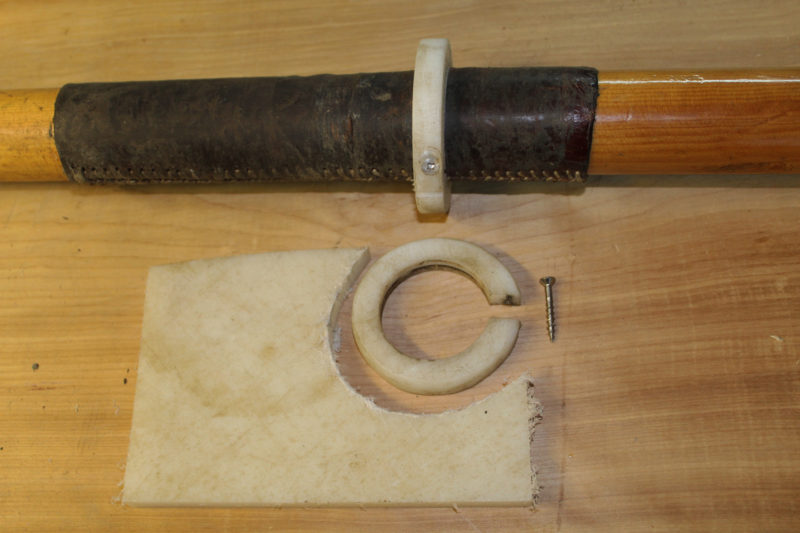 photographs by the author
photographs by the author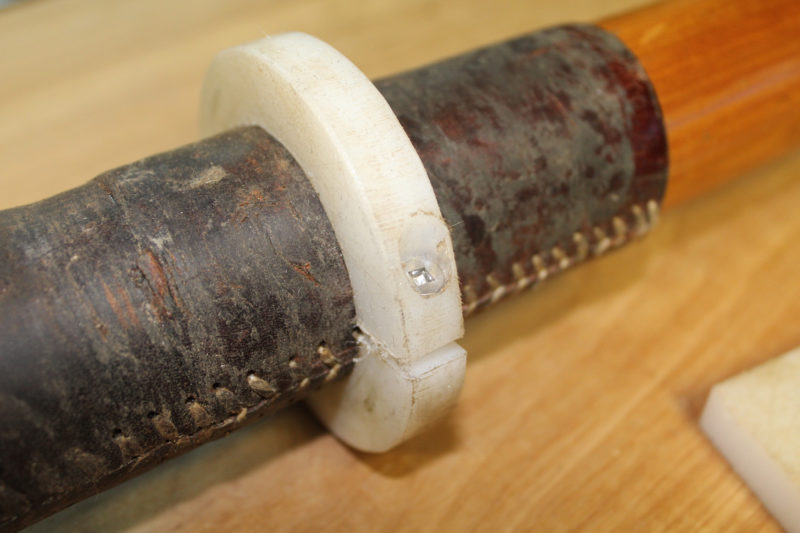
Join The Conversation
We welcome your comments about this article. To include a photo with your remarks, click Choose File below the Comment box.
Comments (7)
Comments are closed.

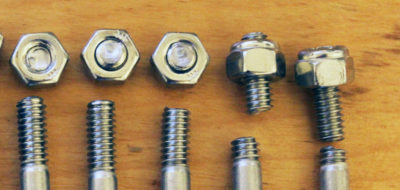
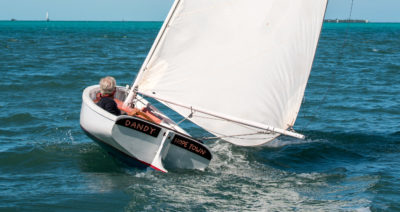

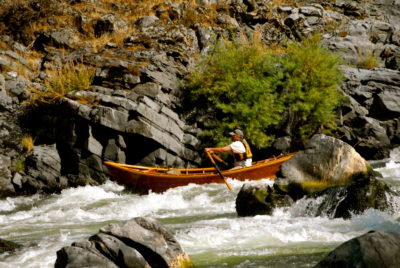
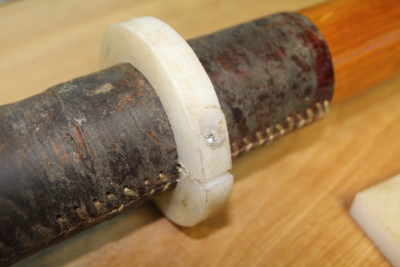
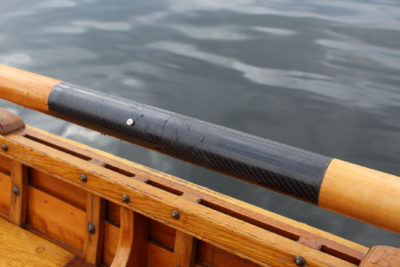
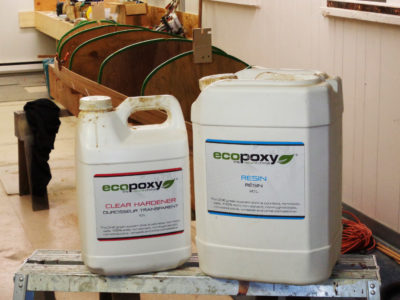
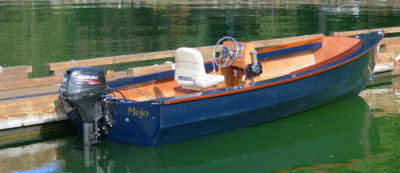
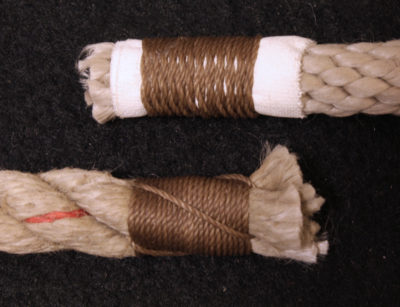
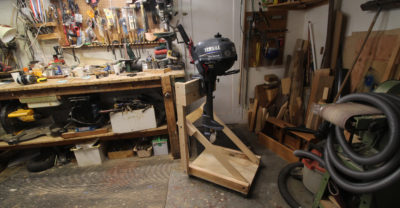

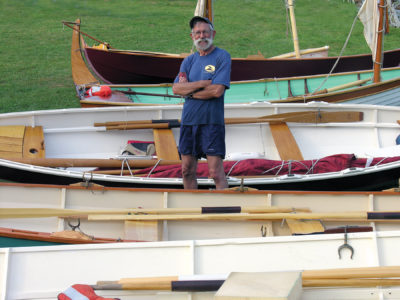
Those thumb buttons are pretty neat and a good way of figuring out where you might want something more finished looking. Historically they go back. I saw some on some 17th century royal barge oars where they just had a couple of tacks. I couldn’t get close to the oars to see what they were made from but suspect hard wood as there were no leathers and they were rowed against rectangular tholes. They were square at the tholes like a modern racing oar.
The delrin button is pretty neat and I need to see what I have in the way of a hole saw, not having a band saw. Same principle as racing oar buttons; I like the adjustability.
Dick Everett showed me another trick if you know where your button wants to be. Do a turks head on the oar before putting a leather on it and leather over it. Neat and just enough. I had a cherished set of oars that were set up this way. I lent them out. Don’t lend your oars.
My daughter teased me for not patenting the thumb button, as if a fortune could be made with a device for traditional rowing. I had a hunch, Ben, that if there were patent-busting prior art out there, you would know about it.
I loaned a pair of canoe paddles to a friend several years ago. They came back, but all beat up. Shakespeare got it right in Hamlet:
Neither a borrower or a lender be;
For loan oft loses both itself and friend,
And borrowing dulls the edge of husbandry.
HDPE is also available in black, which might blend in a bit better ….
Black would certainly hide the grime better than white. My next collars will be grey. (This morning I found a grey kitchen cutting board next to a dumpster.)
I also used some cutting-board material for simple buttons with some oars I made last summer. They aren’t fastened to the oars in any way, just generally cut to fit, and then I just used black electrician’s tape on the inboard side prevent them from sliding up further up the sleeve and reducing my inboard length. I can simply rewrap whenever I want to adjust my inboard, but haven’t so far, or for that matter even had to renew the original wraps.
I first saw the nylon collars in a Gartside plan and have used them for my Drake rowboats. They are lathe turned and seized in place with nylon line. They look a little nicer than the cutting board one, but you pay for it by trying to turn nylon…not so fun.
The buttons are brilliant.
Chris, the buttons for changing gears are genius!